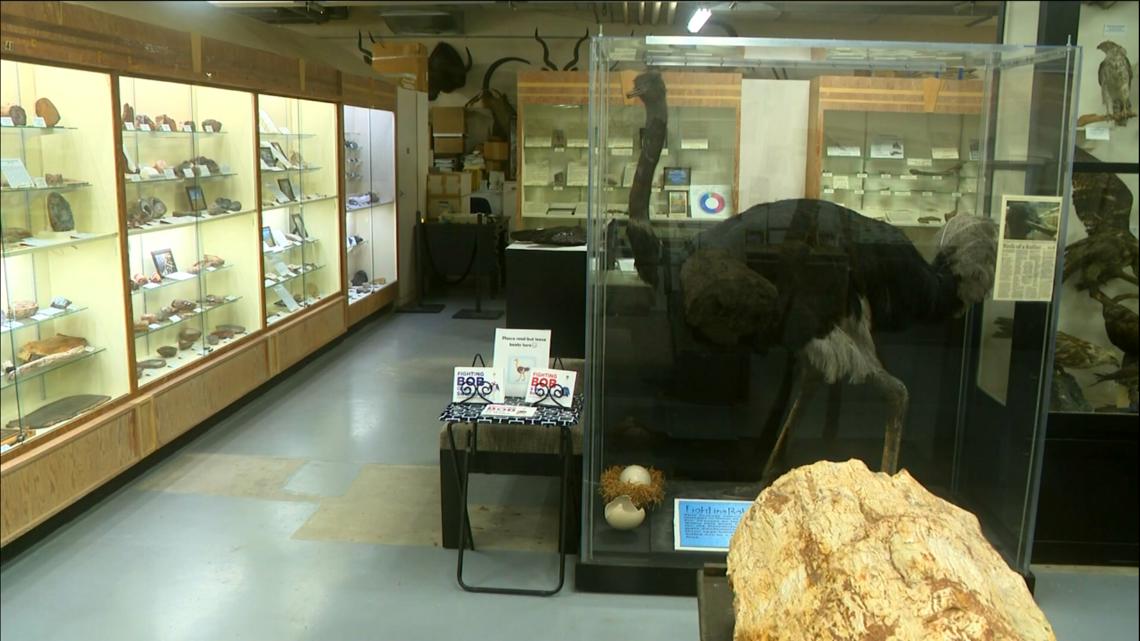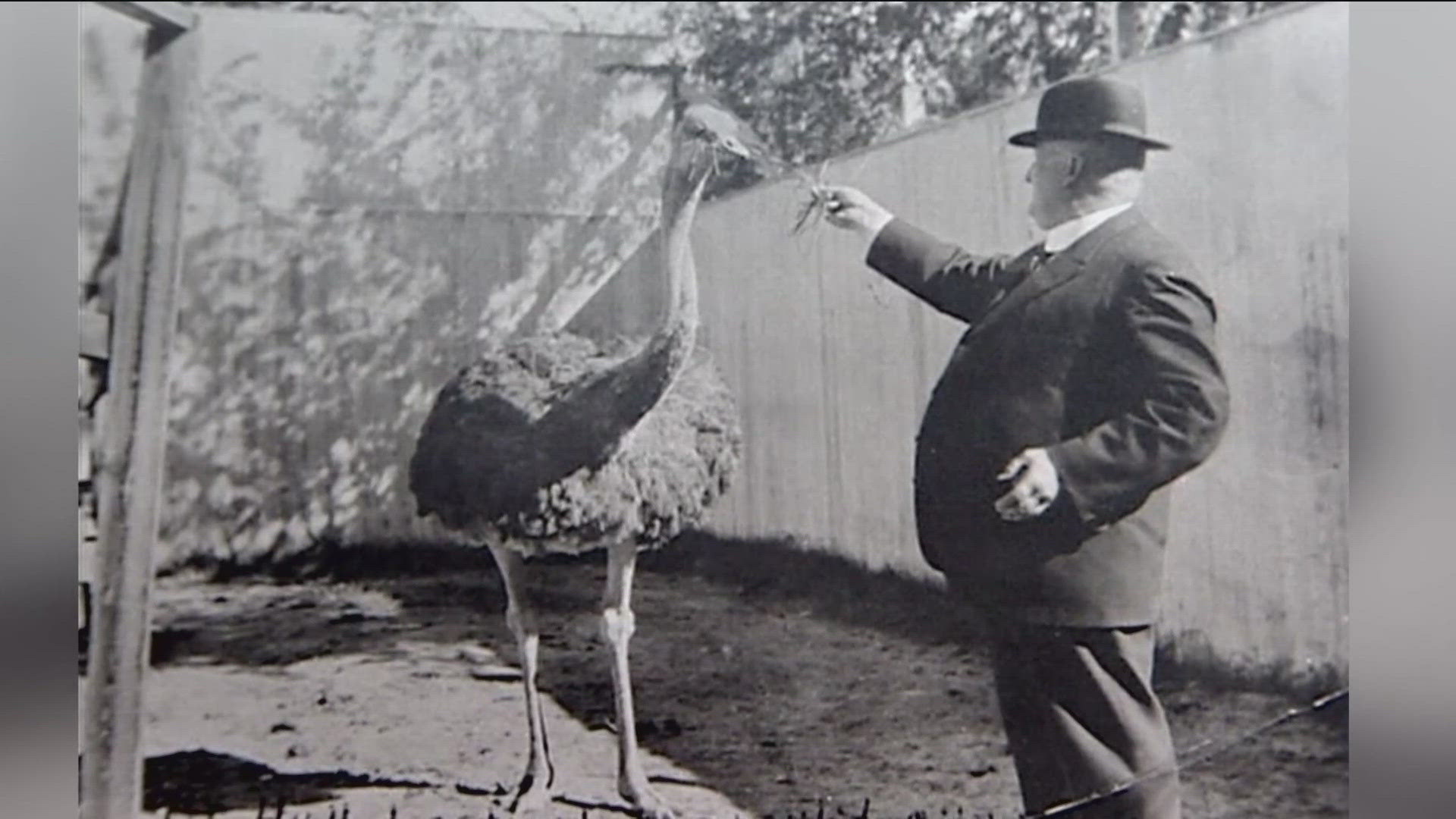BOISE, Idaho — Just after the turn of the century in Boise, people flocked to an amusement park next to the old Natatorium swimming pool off Warm Spring Avenue known as "White City Park."
The name White City was coined after the Columbian Exposition at the 1893 Chicago World's Fair, where a majority of the buildings were painted white.
Boise's White City Park had games, rides, live entertainment and animal attractions, including two ostriches: Fighting Bob and Desdemona.
"Because of his behavior, he got – he got the name, nickname – fighting Bob, and that was apparently named after a boxer, a real famous boxer at that time that was known as Bob Fitzsimmons," said William Clark, the director and curator of invertebrates at the Orma J. Smith Museum of Natural History.
The pair were brought to Boise in 1911 for the Inter-Mountain West Fair at the fairgrounds.
"By the end of that fair, they had been such a popular attraction that some local Boise businessman wanted to buy these two ostriches and put them on display," said Maureen Lavelle, the history programs manager for the Boise City Department of Arts & History.
One reason for their popularity is their feathers.
"Ostrich feathers were very in high demand for fashion and home decor," Lavelle said.
Fighting Bob and Desdemona were then brought to White City Park.
"He was really feisty with visitors and with Desdemona," Lavelle said. "He had a reputation for snapping at fingers, sneaking up on visitors and trying to take a bite or kick out of them."

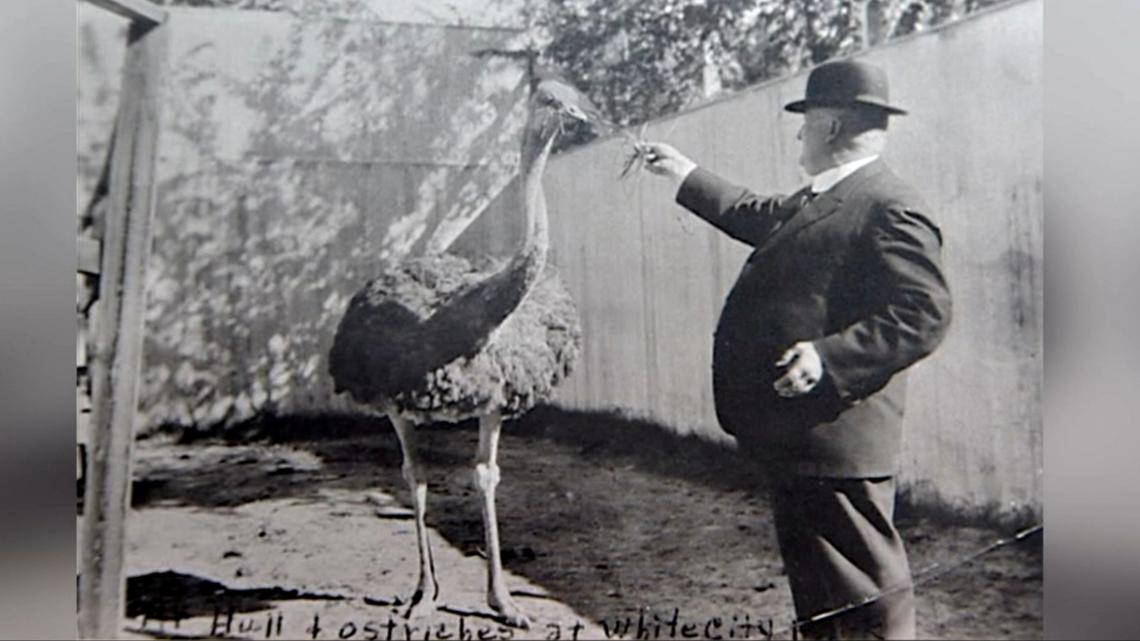
Lavelle added park visitors would come to see the 300-pound birds, then feed them things like the butts of cigars, golf balls, tobacco and ice cream.
"The intent was for these two ostriches to mate and produce a lot of eggs," Lavelle said. "They never did. Instead, they fought and unfortunately in one of those fights, Desdemona's injuries were too much and she died."
But Bob's mayhem didn't stop there.
"At some point, Bob got out of his cage, got into the Boise River," Clark said.
"It sounds like a group of teenagers broke Bob out of his pen and attempted to ride him across the Boise River," Lavelle said, "I don't know how far they got, or how they were caught, but it sounds like he went on an escapade around the city."

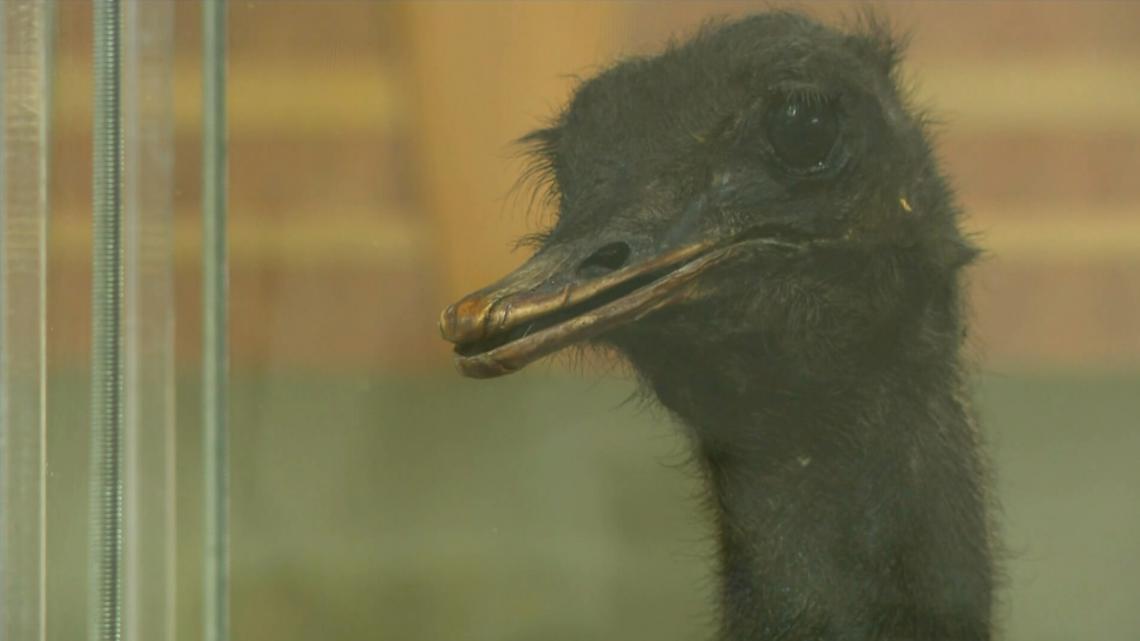
Fighting Bob eventually died in 1927.
"He was such a popular attraction that his owners wanted, I think, to maintain his popularity, and they had him taxidermized," Lavelle said.
90 years later, the Boise City Department of Arts & History decided to bring Fighting Bob back to life. This time, on paper.
"We knew about Fighting Bob as a historic figure in our town and thought about re-imagining him going on adventures throughout Boise," said Makenzi Dunstan, an education outreach specialist for the Boise City Department of Arts & History. "Our department for some time has been looking for ways to engage youth and families and educators and things like children's books are really incredible ways to do that."
So, Fighting Bob became a children's book series, exploring the history of Boise through his eyes.

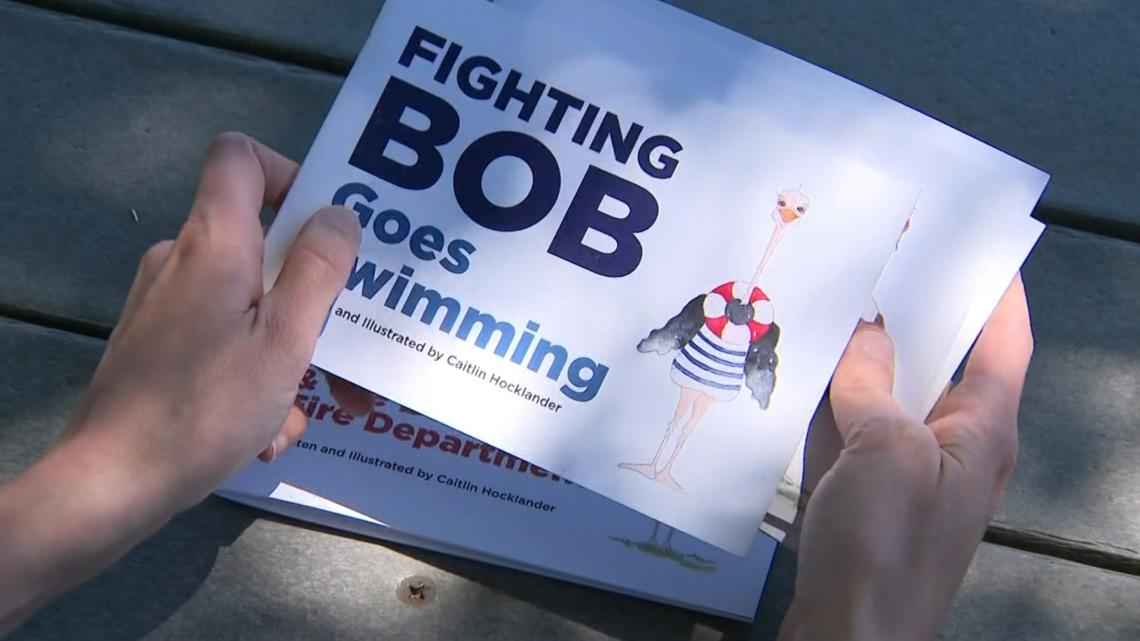
The series is written and illustrated by Caitlin Hocklander, who Dunstan credits with bringing the idea to life.
There are currently five books in the series: Fighting Bob Moves to Boise, Fighting Bob Takes Flight, Fighting Bob & the Boise Depot, Fighting Bob & the Boise Fire Department, and Fighting Bob Goes Swimming.
The books are currently available to check out at Boise Public Library branches.
"We hope that by sharing some of Boise's unique, unique municipal stories people can learn more about their hometown," Dunstan said.
If you are interested in visiting the real Fighting Bob, the Orma J. Smith Museum of Natural History is open to the public on the College of Idaho campus in Caldwell.

